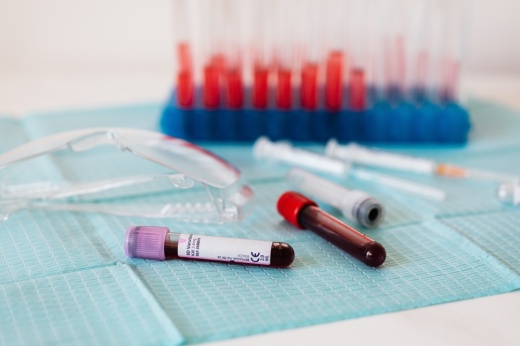According to GCRBC Account Manager Katie Nippress, hospitals within the nonprofit’s coverage area are using roughly 10% more blood for transfusions than they were at this point a year ago, which she said is largely due to hospitals trying to catch up on elective surgeries that were postponed in the early months of the COVID-19 pandemic.
“We don’t like to use the word shortage because we don’t want to create a panic unnecessarily, but we are struggling to keep enough blood on the shelves,” Nippress said. “Every single day, we are needing to collect at least 1,000 blood donations just to support the hospitals here in our area.”
Nippress noted there are countless instances in which a patients might receive a blood transfusion, including during surgeries, after sustaining severe injuries resulting in blood loss, and to treat diseases and bleeding disorders, such as cancer and sickle cell anemia.
In a worst-case scenario, Nippress said blood-supply shortages could force doctors into a position in which they would have choose who would receive blood depending on which patient had the highest probability for a positive outcome.
“Usually, we don’t get to that point except in extreme emergencies,” Nippress said. “That’s not the case right now, and we want to make sure that we keep it that way.”
The pandemic's impact
In July 2020, Gov. Greg Abbott issued an executive order barring hospitals in more than 100 Texas counties, including Harris County, to postpone elective surgeries to free up resources to address the pandemic.
While the measure was only effective through September 2020, GCRBC Donor Recruitment Manager Esmeralda Ancelmo-Walker said the flurry of patients now receiving postponed procedures has made it more difficult for the nonprofit to maintain a steady supply of blood.
“Although we’re keeping up with demand [for blood] and we’re bringing in what every single hospital needs daily, it’s like we're constantly in a state of catch up because [the hospitals are] going through it faster than they normally would,” she said.
According to Ancelmo-Walker, one of the nonprofit's most effective methods for procuring blood donations is through blood drives typically held at schools, colleges, businesses or churches that can bring out at least 15-20 people to donate. However, she said the implementation of social-distancing and work-from-home measures have made it difficult for the GCRBC to host those events.
Data provided by the American Red Cross—a national nonprofit that provides emergency assistance, disaster relief and disaster preparedness education in the United States—shows there has been a 10% decline in blood donations throughout the nation since March 2020. Additionally, there has been a 62% drop in the number of college- and high-school blood drives held during that time frame.
While the GCRBC has seen an increase in the number of high schools and colleges hosting blood drives in recent months, Ancelmo-Walker said setting up blood drives within the business sector has still been difficult.
“A lot of businesses are trying to come back to work from the office; however, every time we see a new variant and we see a rise in cases, they put their risk-management hat back on,” she said. “It’s easier [for businesses] to say ... ‘Let’s go back to working from home’ ... until they feel more comfortable making that decision of bringing everyone to the office.”
Need for community support
Ancelmo-Walker noted while the GCRBC is still able to supply each of the hospitals in its region with its daily blood needs, the nonprofit needs more support from local businesses and community members to ensure a shortage is not reached.
“One in seven people is going to need blood at some point in their life, but only one in 20 people ever donate blood,” she said. “That’s 5% of the population donating blood to help keep it on the shelves for everyone.”
Further, Ancelmo-Walker said every individual blood donation will go on to help three people because each donation is divided into red cells, plasma and platelets, which are all used for separate procedures.
“There couldn’t be anything better to do with 30 minutes of your time,” she said.
For more information about specific blood donation locations or to schedule a blood drive, visit www.giveblood.org.





